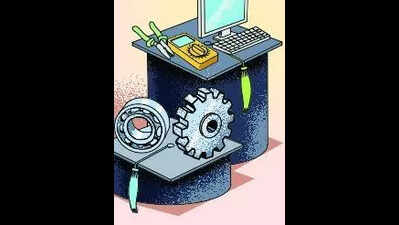Bengaluru: Over the past five years, Karnataka’s engineering landscape has shifted dramatically. Mechanical and civil engineering seats have almost halved, while computer science has doubled since 2020. The good news is that the dip in mechanical and civil is not significant this year. As per data from private colleges and universities (excluding deemed-to-be universities), compiled by Karnataka Examination Authority, there were 17,510 mechanical engineering seats in the country in 2020. In 2021, around 4,000 seats dipped; in 2022, 2,069 seats closed; and in 2023, 2,113 seats dropped. Five years down, the number of mechanical engineering seats now stands at 8,960, almost half of what it was in 2020.In civil engineering, the story is similar. The number of seats fell from 14,160 to 7,860 in five years. The biggest dip was in 2023 (2,268 seats). In 2021 and 2022, around 1,734 and 1,494 seats closed, respectively. In 2025, the changes are not drastic. Civil engineering seats are down only by 90 seats, while there are 210 more mechanical engineering seats.Meanwhile, buoyed by the demand for computer science engineering streams, colleges blindly increased the seats. Computer Science and Engineering seats shot up from 20,812 seats in 2020 to 38,178 in 2025. In 2022, 6,776 more seats were added, and in 2025, 7,785 seats were increased.This is in addition to the multiple allied streams related to computer science that started and whose seats increased during this period. For instance, Computer Science and Engineering (artificial intelligence and machine learning) increased from 450 to 6,669 in five years. Artificial Intelligence and data science is now at 2,610 from 210 in 2020. Robotics and automation, which had only 30 seats five years ago, is now at 300.“The All India Council of Technical Education permitted colleges to switch seats between streams. With this, several colleges changed their mechanical and civil seats into CS and allied programmes. Thus, while the overall number of seats remained the same, there were drastic changes within the streams,” said KN Subramanya, principal of RV College of Engineering.“Mechanical and civil require a lot of infrastructure. The equipment is costly too. So when there is no demand for quite some time, colleges started reducing the seats. But now, the wheel is slowly changing. The demand for mechanical and civil is returning. In our college, the cut-offs for these courses have increased compared to previous years,” he added.S Vidyashankar, vice-chancellor of Visvesvaraya Technological University, said: “No country can sustain without these core branches. The demand for a course is like a cycle; it was bound to come back. We are seeing the demand increasing for civil and mechanical now. As a university, we have also incorporated many changes in the curriculum.”




